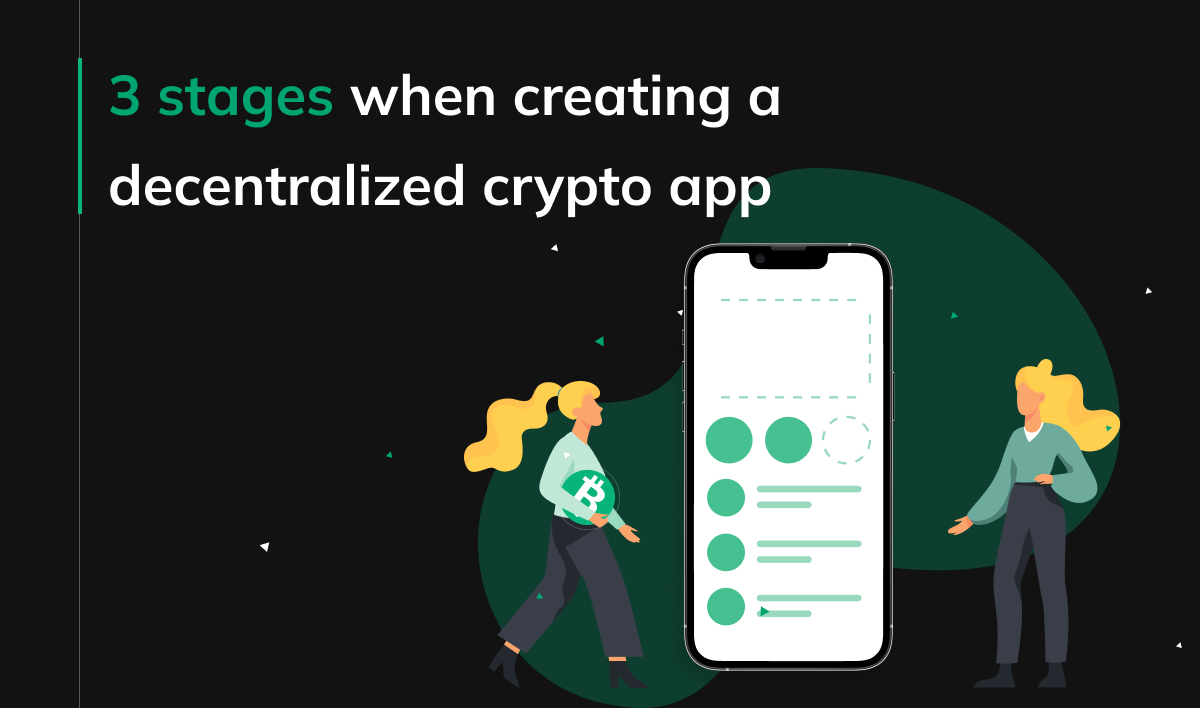3 stages of creating a decentralized crypto app

Everyone in this world knows how the popularity of cryptocurrencies has shot in recent years. Not surprisingly, new ones are being invented all the time – according to Google, there are nearly 6,000 of them. If you want to set up your own blockchain, the system on which the cryptocurrencies are based, you need to know that sooner or later you should give ownership over it to the users. In this article, we want to show you the 3 stages of a crypto app development and advise you on how to bring it to the point where it will become fully decentralized.
Stage one: to create a product that fits the market
Actually, this is the first and the basic rule for all startup founders. When developing the first version of a product, even before, focus on meeting the requirements of the market and think about collecting the first users. You need a great development team that applies agile methodology, works in iterations and learns fast to go live as soon as it is possible.
At this stage, you will need a well-planned marketing strategy and… transparency. Do not be afraid to share your documentation and development plans with potential users.
This is not the time to…
As you probably already know, most of the cryptocurrencies are based on decentralization and distribution of tokens between users (we write about it below). However, this is not yet this stage. Now, you have to control the processes and make decisions quickly on your own. Of course, this must be preceded by checking the market hypotheses, and this in turn requires collecting feedback from early users.
Stage two: time to grow
The goal of this stage is to activate members. The founders need a community capable of sustaining a valuable network, thus they should activate users and in various ways, such as grants or other benefits, encourage them to participate in product development. This is the beginning of shifting responsibility from owners to users.

Sometimes it ends with an agreement that decisions are made by consensus through voting, which brings the system closer to decentralization. In this case, the network becomes more secure for users faster, and this increases the chance of acquiring new ones. In other cases, decision making by voting occurs at the next stage, which is an easier solution in practice.
How to effectively expand the network?
The most popular way is to distribute tokens. In the beginning, as a blockchain owner, you need to think about the number of tokens available in your system, their purpose, and whether it will be limited or not. Then consider the following points:
- how many tokens will you leave on your side?
- how many tokens will you distribute among early users?
- how will you reward different types of contributors?
Then share this knowledge, so that future users know it’s worth joining your network.
In short, at this stage token distribution should be promissory so far.
Make your blockchain more attractive
What else can make you stand out? It is definitely worth working on good blockchain capacity which is defined as the average number of transactions successfully recorded per second. The pace of operation is something that your users definitely care about, so it is a good direction to improve.

Stage three: decentralized crypto app
Most of the current financial and governmental systems are centralized, which means that they are managed by one of the highest authorities, such as the central bank. This approach has several key disadvantages, due to the fact that each central authority also plays the role of a single point of failure in the system. Any failure at the top of the hierarchy inevitably has a negative impact on the whole system.
Cryptocurrencies offer an alternative approach based on blockchain technology which provides each user with the opportunity to become one of many payment processors on the network. This results in decentralization without a point of failure, which makes it more resilient, efficient, and democratic. And this is your goal as a crypto app founder.
Once you have a valuable network of users, you need to distribute the tokens in a well-thought-out way. When you do that, the community will take responsibility for your system. This may sound strange because you get rid of ownership over your own work. However, only such a solution guarantees the full security of the network and will make it useful and attractive for all its users.




